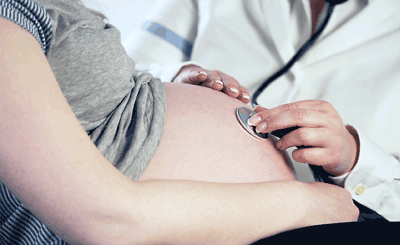Buprenorphine Found to Be as Safe, Effective as Methadone During Pregnancy
Abstract
Rates for illicit opioid use during pregnancy in the United States have nearly quadrupled since 2000, according to the Substance Abuse and Mental Health Services Administration.
A recent meta-analysis published in the journal Addiction suggests that taking buprenorphine for opioid use disorder during pregnancy carries no greater risk to offspring than methadone and may even protect against preterm birth and low birth weight.

“The results of this meta-analysis could not have come at a better time,” said Erin Zerbo, M.D., an addiction expert and assistant professor of psychiatry at Rutgers New Jersey Medical School, who was not involved with the study. “Given that we are experiencing a national opioid epidemic, we need the greatest resources possible to treat those with an opioid use disorder—especially during pregnancy, when two lives are at risk,” she told Psychiatric News. Zerbo is a member of the Psychiatric News PsychoPharm editorial board.
Medication-assisted treatment with long-acting opioid agonists, such as methadone or buprenorphine, in combination with psychosocial interventions during pregnancy has been found to reduce maternal craving for opioids and improve prenatal care.
While methadone has been used to treat pregnant women with opioid use disorder since the 1970s, a growing number of pregnant women with this disorder now take buprenorphine, which was approved for such use in the United States in 2002. To determine how the medications compare in terms of maternal, fetal, and child outcomes, a team of researchers from the United States led a systematic review of clinical studies comparing the safety of buprenorphine with that of methadone in pregnant women with opioid use disorder.
Analysis of 18 studies—including three randomized, controlled trials and 15 cohort observational studies totaling 2,146 pregnancies—revealed that compared with methadone, buprenorphine was associated with a lower risk for preterm birth. In addition, women who were being treated with buprenorphine were more likely to have offspring with greater birth weight and larger head circumference than those born to women who were treated with methadone. No treatment differences were observed for spontaneous fetal death, congenital anomalies, or other fetal growth measures.
“Our study shows that buprenorphine is at least as relatively safe as methadone for the treatment of OUD [opioid use disorder] during pregnancy,” Hendree Jones, Ph.D., a professor in the Department of Obstetrics and Gynecology at the University of North Carolina School of Medicine, told Psychiatric News. “It also indicates that in terms of the outcomes of preterm birth, birth weight, and head circumference, buprenorphine may confer some added benefit relative to methadone.”
Jones, who is also the executive director of UNC Horizons, a substance use treatment program for women, emphasized that because no single medication for opioid use disorder is effective at treating all patients, it is important that clinicians discuss the risks and benefits of all options for treating opioid use disorder with their patients.
The study was funded in part by Indivior PLC. ■



